Intel Core i3-8100 vs Intel Core i5-8500: What is the difference?
53points
Intel Core i3-8100
57points
Intel Core i5-8500
Comparison winner
vs
64 facts in comparison
Intel Core i3-8100
Intel Core i5-8500
Why is Intel Core i3-8100 better than Intel Core i5-8500?
- Supports ECC memory?
- 6 higher clock multiplier?
36vs30
Why is Intel Core i5-8500 better than Intel Core i3-8100?
- 25% faster CPU speed?
6 x 3GHzvs4 x 3.6GHz - 266MHz higher ram speed?
2666MHzvs2400MHz - 2 more CPU threads?
6vs4 - 0.5MB bigger L2 cache?
1.5MBvs1MB - 15.8% higher PassMark result?
9476vs8183 - 3MB bigger L3 cache?
9MBvs6MB - 128KB bigger L1 cache?
384KBvs256KB - 3.
2GB/s more memory bandwidth?
41.6GB/svs38.4GB/s
Which are the most popular comparisons?
Intel Core i3-8100
vs
Intel Core i5-6500
Intel Core i5-8500
vs
Intel Core i3-10100
Intel Core i3-8100
vs
Intel Core M3-8100Y
Intel Core i5-8500
vs
Intel Core i5-9500
Intel Core i3-8100
vs
Intel Core i3-8100T
Intel Core i5-8500
vs
Intel Core i5-8500T
Intel Core i3-8100
vs
Intel Pentium Gold G5400
Intel Core i5-8500
vs
Intel Core i7-6700
Intel Core i3-8100
vs
Intel Core i5-7500
Intel Core i5-8500
vs
Intel Core i5-9400F
Intel Core i3-8100
vs
Intel Celeron 6305
Intel Core i5-8500
vs
Intel Core i7-8700
Intel Core i3-8100
vs
Intel Core i7-4770
Intel Core i5-8500
vs
Intel Core i5-7500
Intel Core i3-8100
vs
Intel Core i7-3770
Intel Core i5-8500
vs
Intel Core i3-9100
Intel Core i3-8100
vs
Intel Core i7-6700
Intel Core i5-8500
vs
Intel Core i5-9400
Intel Core i3-8100
vs
Intel Core i3-10100
Price comparison
User reviews
Performance
1. CPU speed
CPU speed
4 x 3.6GHz
6 x 3GHz
The CPU speed indicates how many processing cycles per second can be executed by a CPU, considering all of its cores (processing units). It is calculated by adding the clock rates of each core or, in the case of multi-core processors employing different microarchitectures, of each group of cores.
2.CPU threads
More threads result in faster performance and better multitasking.
3.turbo clock speed
Unknown. Help us by suggesting a value. (Intel Core i3-8100)
4.1GHz
When the CPU is running below its limitations, it can boost to a higher clock speed in order to give increased performance.
4.Has an unlocked multiplier
✖Intel Core i3-8100
✖Intel Core i5-8500
Some processors come with an unlocked multiplier which makes them easy to overclock, allowing you to gain increased performance in games and other apps.
5.L2 cache
A larger L2 cache results in faster CPU and system-wide performance.
6.L3 cache
A larger L3 cache results in faster CPU and system-wide performance.
7.L1 cache
A larger L1 cache results in faster CPU and system-wide performance.
8.L2 core
0.25MB/core
0.25MB/core
More data can be stored in the L2 cache for access by each core of the CPU.
9.L3 core
1.5MB/core
1.5MB/core
More data can be stored in the L3 cache for access by each core of the CPU.
Memory
1.RAM speed
2400MHz
2666MHz
It can support faster memory, which will give quicker system performance.
2.maximum memory bandwidth
38.4GB/s
41.6GB/s
This is the maximum rate that data can be read from or stored into memory.
3.DDR memory version
DDR (Double Data Rate) memory is the most common type of RAM. Newer versions of DDR memory support higher maximum speeds and are more energy-efficient.
4.memory channels
More memory channels increases the speed of data transfer between the memory and the CPU.
5.maximum memory amount
The maximum amount of memory (RAM) supported.
6.bus transfer rate
The bus is responsible for transferring data between different components of a computer or device.
7.Supports ECC memory
✔Intel Core i3-8100
✖Intel Core i5-8500
Error-correcting code memory can detect and correct data corruption. It is used when is it essential to avoid corruption, such as scientific computing or when running a server.
8.eMMC version
Unknown. Help us by suggesting a value. (Intel Core i3-8100)
Help us by suggesting a value. (Intel Core i3-8100)
Unknown. Help us by suggesting a value. (Intel Core i5-8500)
A higher version of eMMC allows faster memory interfaces, having a positive effect on the performance of a device. For example, when transferring files from your computer to the internal storage over USB.
9.bus speed
Unknown. Help us by suggesting a value. (Intel Core i3-8100)
Unknown. Help us by suggesting a value. (Intel Core i5-8500)
The bus is responsible for transferring data between different components of a computer or device.
Benchmarks
1.PassMark result
This benchmark measures the performance of the CPU using multiple threads.
2.PassMark result (single)
This benchmark measures the performance of the CPU using a single thread.
3.Geekbench 5 result (multi)
Geekbench 5 is a cross-platform benchmark that measures a processor’s multi-core performance. (Source: Primate Labs, 2022)
(Source: Primate Labs, 2022)
4.Cinebench R20 (multi) result
Unknown. Help us by suggesting a value. (Intel Core i3-8100)
Cinebench R20 is a benchmark tool that measures a CPU’s multi-core performance by rendering a 3D scene.
5.Cinebench R20 (single) result
Unknown. Help us by suggesting a value. (Intel Core i3-8100)
Cinebench R20 is a benchmark tool that measures a CPU’s single-core performance by rendering a 3D scene.
6.Geekbench 5 result (single)
Geekbench 5 is a cross-platform benchmark that measures a processor’s single-core performance. (Source: Primate Labs, 2022)
7.Blender (bmw27) result
Unknown. Help us by suggesting a value. (Intel Core i3-8100)
420.7seconds
The Blender (bmw27) benchmark measures the performance of a processor by rendering a 3D scene. More powerful processors can render the scene in less time.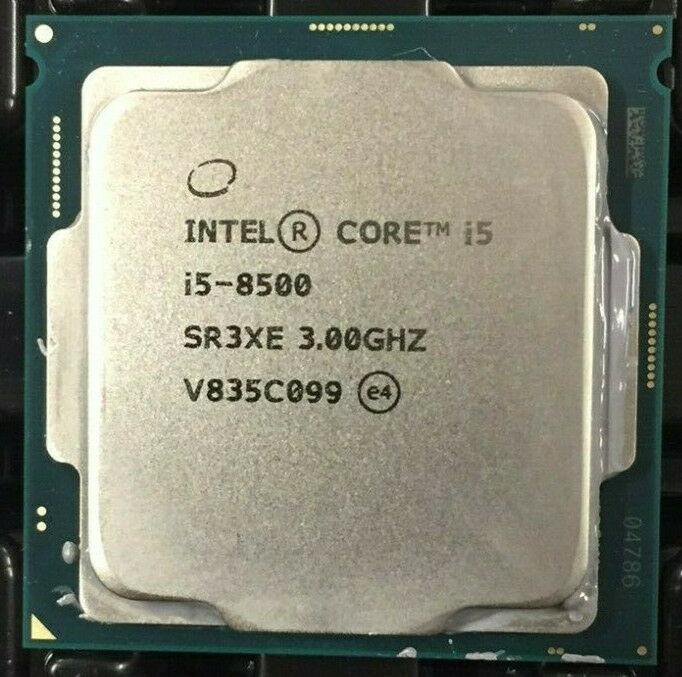
8.Blender (classroom) result
Unknown. Help us by suggesting a value. (Intel Core i3-8100)
1122.2seconds
The Blender (classroom) benchmark measures the performance of a processor by rendering a 3D scene. More powerful processors can render the scene in less time.
9.performance per watt
Unknown. Help us by suggesting a value. (Intel Core i3-8100)
This means the CPU is more efficient, giving a greater amount of performance for each watt of power used.
Features
1.uses multithreading
✖Intel Core i3-8100
✔Intel Core i5-8500
Multithreading technology (such as Intel’s Hyperthreading or AMD’s Simultaneous Multithreading) provides increased performance by splitting each of the processor’s physical cores into virtual cores, also known as threads. This way, each core can run two instruction streams at once.
2. Has AES
Has AES
✔Intel Core i3-8100
✔Intel Core i5-8500
AES is used to speed up encryption and decryption.
3.Has AVX
✔Intel Core i3-8100
✔Intel Core i5-8500
AVX is used to help speed up calculations in multimedia, scientific and financial apps, as well as improving Linux RAID software performance.
4.SSE version
SSE is used to speed up multimedia tasks such as editing an image or adjusting audio volume. Each new version contains new instructions and improvements.
5.Has F16C
✔Intel Core i3-8100
✔Intel Core i5-8500
F16C is used to speed up tasks such as adjusting the contrast of an image or adjusting volume.
6.bits executed at a time
Unknown. Help us by suggesting a value. (Intel Core i3-8100)
Unknown. Help us by suggesting a value. (Intel Core i5-8500)
NEON provides acceleration for media processing, such as listening to MP3s.
7.Has MMX
✔Intel Core i3-8100
✔Intel Core i5-8500
MMX is used to speed up tasks such as adjusting the contrast of an image or adjusting volume.
8.Has TrustZone
✖Intel Core i3-8100
✖Intel Core i5-8500
A technology integrated into the processor to secure the device for use with features such as mobile payments and streaming video using digital rights management (DRM).
9.front-end width
Unknown. Help us by suggesting a value. (Intel Core i3-8100)
Unknown. Help us by suggesting a value. (Intel Core i5-8500)
The CPU can decode more instructions per clock (IPC), meaning that the CPU performs better
Price comparison
Cancel
Which are the best CPUs?
Intel Core i5 8500 vs i3 8100: performance comparison
VS
Intel Core i5 8500
Intel Core i3 8100
We compared two desktop CPUs: the 3. 0 GHz Intel Core i5 8500 with 6-cores against the 3.6 GHz i3 8100 with 4-cores. On this page, you’ll find out which processor has better performance in benchmarks, games and other useful information.
0 GHz Intel Core i5 8500 with 6-cores against the 3.6 GHz i3 8100 with 4-cores. On this page, you’ll find out which processor has better performance in benchmarks, games and other useful information.
- Review
- Differences
- Performance
- Specs
- Comments
Review
General overview and comparison of the processors
Single-Core Performance
Performance in single-threaded apps and benchmarks
Core i5 8500
56
Core i3 8100
51
Performance
Measure performance when all cores are involved
Core i5 8500
28
Core i3 8100
18
Power Efficiency
The efficiency score of electricity consumption
Core i5 8500
46
Core i3 8100
44
NanoReview Final Score
Generic CPU rating
Core i5 8500
43
Core i3 8100
37
Key Differences
What are the key differences between 8100 and 8500
Advantages of Intel Core i5 8500
- Supports up to 128 GB DDR4-2666 RAM
- Has 2 more physical cores
- Has 3 MB larger L3 cache size
- Newer — released 6-months later
- Around 4.
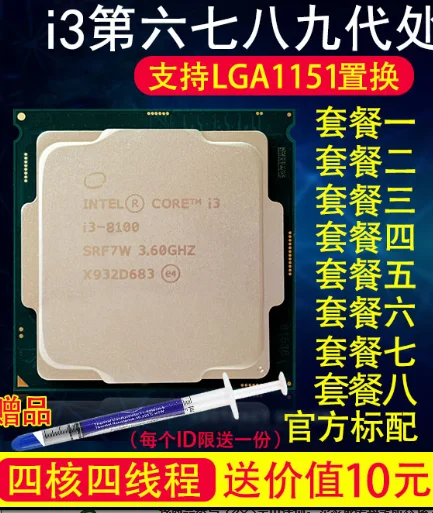 1 GB/s (11%) higher theoretical memory bandwidth
1 GB/s (11%) higher theoretical memory bandwidth
Benchmarks
Comparing the performance of CPUs in benchmarks
Cinebench R23 (Single-Core)
Core i5 8500
+13%
1047
Core i3 8100
927
Cinebench R23 (Multi-Core)
Core i5 8500
+54%
5487
Core i3 8100
3571
Passmark CPU (Single-Core)
Core i5 8500
+11%
2460
Core i3 8100
2222
Passmark CPU (Multi-Core)
Core i5 8500
+56%
9544
Core i3 8100
6129
Geekbench 5 (Single-Core)
Core i5 8500
+8%
1026
Core i3 8100
946
Geekbench 5 (Multi-Core)
Core i5 8500
+46%
4834
Core i3 8100
3314
▶️ Submit your Cinebench R23 result
By purchasing through links on this site, we may receive a commission from Amazon. This does not affect our assessment methodology.
Specifications
Full technical specification of Intel Core i5 8500 and i3 8100
General
| Vendor | Intel | Intel |
| Released | April 3, 2018 | October 5, 2017 |
| Type | Desktop | Desktop |
| instruction set | x86-64 | x86-64 |
| Codename | Coffee Lake | Coffee Lake |
| Model number | i5-8500 | i3-8100 |
| Socket | LGA-1151 | LGA-1151 |
| Integrated GPU | UHD Graphics 630 | UHD Graphics 630 |
Performance
| Cores | 6 | 4 |
| Threads | 6 | 4 |
| Base Frequency | 3. 0 GHz 0 GHz |
3.6 GHz |
| Turbo Boost Frequency | 4.1 GHz | — |
| Bus frequency | 100 MHz | 100 MHz |
| Multiplier | 30x | 28x |
| Bus Bandwidth | 8 GT/s | 8 GT/s |
| L1 Cache | 64K (per core) | 64K (per core) |
| L2 Cache | 256K (per core) | 256K (per core) |
| L3 Cache | 9MB (shared) | 6MB (shared) |
| Unlocked Multiplier | No | No |
| Fabrication process | 14 nm | 14 nm |
| TDP | 65 W | 65 W |
| Max. temperature | 100°C | 100°C |
| Integrated Graphics | Intel UHD Graphics 630 | Intel UHD Graphics 630 |
| GPU Base Clock | 350 MHz | 350 MHz |
| GPU Boost Clock | 1100 MHz | 1100 MHz |
| Shading Units | 192 | 192 |
| TMUs | 24 | 24 |
| ROPs | 3 | 3 |
| Execution Units | 24 | 24 |
| TGP | 15 W | 15 W |
Max. Resolution Resolution |
4096×2304 — 60 Hz | 4096×2304 — 60 Hz |
iGPU FLOPS
Core i5 8500
0.38 TFLOPS
Core i3 8100
0.38 TFLOPS
Memory support
| Memory types | DDR4-2666 | DDR4-2400 |
| Memory Size | 128 GB | 64 GB |
| Max. Memory Channels | 2 | 2 |
| Max. Memory Bandwidth | 41.6 GB/s | 37.5 GB/s |
| ECC Support | No | Yes |
| Official site | Intel Core i5 8500 official page | Intel Core i3 8100 official page |
| PCI Express Version | 3.0 | 3.0 |
| PCI Express Lanes | 16 | 16 |
| Extended instructions | SSE4. 1, SSE4.2, AVX-2 1, SSE4.2, AVX-2 |
SSE4.1, SSE4.2, AVX-2 |
Cast your vote
Choose between two processors
Core i5 8500
3 (100%)
Core i3 8100
0 (0%)
Total votes: 3
So which CPU will you choose: Intel Core i3 8100 or i5 8500?
Name
Message
Promotion
Intel Core i5-8500 vs Intel Core i3-8100
Summary
-
Intel Core i5-8500
140%
-
Intel Core i3-8100
100%
Relative performance
-
Intel Core i5-8500
112%
-
Intel Core i3-8100
100%
Relative performance
-
Intel Core i5-8500
168%
-
Intel Core i3-8100
100%
Relative performance
Reasons to consider Intel Core i5-8500 |
12% higher single threaded performance. |
| Much higher multi threaded performance (around 68% higher). This allows for higher performance in professional applications like encoding or heavy multitasking. |
| Around 40% higher average synthetic performance. |
Reasons to consider Intel Core i3-8100 |
| None |
Gaming
HWBench recommends Intel Core i5-8500
Based on game and synthetic benchmarks, and theoretical specifications.
Productivity
HWBench recommends Intel Core i5-8500
Based on productivity benchmarks, overall multithreaded performance and theoretical specifications.
Features
| Intel Core i5-8500 | Intel Core i3-8100 | |||
|---|---|---|---|---|
| MMX | ||||
| SSE | ||||
| SSE2 | ||||
| SSE3 | ||||
| SSSE3 | ||||
SSE4.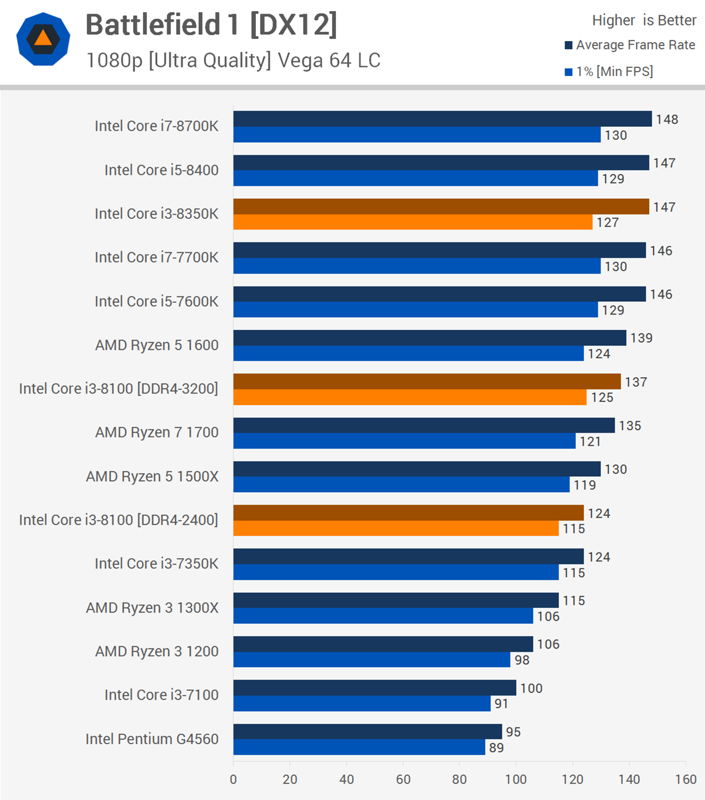 2 2 |
||||
| AVX | ||||
| AVX2 | ||||
| EIST | ||||
| Intel 64 | ||||
| XD bit | ||||
| VT-x | ||||
| VT-d | ||||
| AES-NI | ||||
| TSX | ||||
| TXT | ||||
| CLMUL | ||||
| FMA3 | ||||
| F16C | ||||
| BMI1 | ||||
| BMI2 | ||||
| Boost 2.0 | ||||
Architecture
| Intel Core i5-8500 | Intel Core i3-8100 | |||
|---|---|---|---|---|
| Architecture | Intel_Coffelake | vs | Intel_Coffelake | |
| Market | Desktop | vs | Desktop | |
| Memory Support | DDR4 | vs | DDR4 | |
| Codename | Coffee Lake | vs | Coffee Lake | |
| Release Date | Feb 2018 | vs | Jan 2018 |
Cores
| Intel Core i5-8500 | Intel Core i3-8100 | |||
|---|---|---|---|---|
| Cores | 6 | vs | 4 | |
| Threads | 6 | vs | 4 | |
| SMPs | 1 | vs | 1 | |
| Integrated Graphics | UHD Graphics 630 | vs | Intel UHD 630 |
Cache
| Intel Core i5-8500 | Intel Core i3-8100 | |||
|---|---|---|---|---|
| L1 Cache | 64 KB (per core) | vs | 64 KB (per core) | |
| L2 Cache | 256 KB (per core) | vs | 256 KB (per core) | |
| L3 Cache | 9216 KB (shared) | vs | 6144 KB (shared) |
Physical
| Intel Core i5-8500 | Intel Core i3-8100 | |||
|---|---|---|---|---|
| Socket | Intel Socket 1151 | vs | Intel Socket 1151 | |
| Max Case Temp | 72°C | vs | 72°C | |
| Package | FC-LGA1151 | vs | FC-LGA1151 | |
| Die Size | unknown | vs | 151mm² | |
| Process | 14 nm | vs | 14 nm |
Performance
| Intel Core i5-8500 | Intel Core i3-8100 | |||
|---|---|---|---|---|
| Cpu Frequency | 3000 MHz | vs | 2800 MHz | |
| Turbo Clock | 4100 MHz | vs | 3600 MHz | |
| Base Clock | 100 MHz | vs | 100 MHz | |
| Voltage | variable | vs | unknown | |
| TDP | 65 W | vs | 65 W |
-
Intel Core i5-8500
4920 points
-
Intel Core i3-8100
4320 points
Points — higher is better
-
Intel Core i5-8500
21600 points
-
Intel Core i3-8100
13440 points
Points — higher is better
points — higher is better
points — higher is better
Intel Core i3-8100 vs Intel Core i5-8500
|
|
|
|
|
Intel Core i3-8100 vs Intel Core i5-8500
Comparison of the technical characteristics between the processors, with the Intel Core i3-8100 on one side and the Intel Core i5-8500 on the other side. The first is dedicated to the desktop sector, It has 4 cores, 4 threads, a maximum frequency of 3,6GHz. The second is used on the desktop segment, it has a total of 6 cores, 6 threads, its turbo frequency is set to 4,1 GHz. The following table also compares the lithography, the number of transistors (if indicated), the amount of cache memory, the maximum RAM memory capacity, the type of memory accepted, the release date, the maximum number of PCIe lanes, the values obtained in Geekbench 4 and Cinebench R15.
The first is dedicated to the desktop sector, It has 4 cores, 4 threads, a maximum frequency of 3,6GHz. The second is used on the desktop segment, it has a total of 6 cores, 6 threads, its turbo frequency is set to 4,1 GHz. The following table also compares the lithography, the number of transistors (if indicated), the amount of cache memory, the maximum RAM memory capacity, the type of memory accepted, the release date, the maximum number of PCIe lanes, the values obtained in Geekbench 4 and Cinebench R15.
Note: Commissions may be earned from the links above.
This page contains references to products from one or more of our advertisers. We may receive compensation when you click on links to those products. For an explanation of our advertising policy, please visit this page.
Specifications:
| Processor | Intel Core i3-8100 | Intel Core i5-8500 | ||||||
| Market (main) | Desktop | Desktop | ||||||
| ISA | x86-64 (64 bit) | x86-64 (64 bit) | ||||||
| Microarchitecture | Coffee Lake | Coffee Lake | ||||||
| Core name | Coffee Lake-S | Coffee Lake-S | ||||||
| Family | Core i3-8000 | Core i5-8000 | ||||||
| Part number(s), S-Spec | BX80684I38100, BXC80684I38100, CM8068403377308, SR3N5 |
BX80684I58500, BXC80684I58500, CM8068403362607, BOC80684I58500, BO80684I58500, SR3XE |
||||||
| Release date | Q4 2017 | Q2 2018 | ||||||
| Lithography | 14 nm++ | 14 nm++ | ||||||
| Cores | 4 | 6 | ||||||
| Threads | 4 | 6 | ||||||
| Base frequency | 3,6 GHz | 3,0 GHz | ||||||
| Turbo frequency | — | 4,1 GHz | ||||||
| Bus speed | 8 GT/s | 8 GT/s | ||||||
| Cache memory | 6 MB | 9 MB | ||||||
| Max memory capacity | 64 GB | 64 GB | ||||||
| Memory types | DDR4-2400 | DDR4-2666 | ||||||
| Max # of memory channels | 2 | 2 | ||||||
| Max memory bandwidth | 37,5 GB/s | 41,6 GB/s | ||||||
| Max PCIe lanes | 16 | 16 | ||||||
| TDP | 65 W | 65 W | ||||||
| Suggested PSU | 600W ATX Power Supply | 600W ATX Power Supply | ||||||
| GPU integrated graphics | Intel UHD Graphics 630 (Coffee Lake) | Intel UHD Graphics 630 (Coffee Lake) | ||||||
| GPU execution units | 23 | 23 | ||||||
| GPU shading units | 184 | 184 | ||||||
| GPU base clock | 350 MHz | 350 MHz | ||||||
| GPU boost clock | 1100 MHz | 1100 MHz | ||||||
| GPU FP32 floating point | 423,2 GFLOPS | 423,2 GFLOPS | ||||||
| Socket | LGA1151 | LGA1151 | ||||||
| Compatible motherboard | Socket LGA 1151 Motherboard | Socket LGA 1151 Motherboard | ||||||
| Maximum temperature | 100°C | 100°C | ||||||
| CPU-Z single thread | 422 | 463 | ||||||
| CPU-Z multi thread | 1. 654 654 |
2.725 | ||||||
| Cinebench R15 single thread | 154 | 174 | ||||||
| Cinebench R15 multi-thread | 616 | 981 | ||||||
| Cinebench R20 single thread | 363 | 402 | ||||||
| Cinebench R20 multi-thread | 1.408 | 2.229 | ||||||
| Cinebench R23 single thread | 707 | 943 | ||||||
| Cinebench R23 multi-thread | 2.745 | 5.526 | ||||||
| PassMark single thread | 2.231 | 2.483 | ||||||
| PassMark CPU Mark | 6. 120 120 |
9.596 | ||||||
| (Windows 64-bit) Geekbench 4 single core |
4.327 | 4.793 | ||||||
| (Windows 64-bit) Geekbench 4 multi-core |
12.377 | 18.008 | ||||||
| (Windows) Geekbench 5 single core |
962 | 1.156 | ||||||
| (Windows) Geekbench 5 multi-core |
3.031 | 5.365 | ||||||
| (SGEMM) GFLOPS performance |
225,6 GFLOPS | 252 GFLOPS | ||||||
| (Multi-core / watt performance) Performance / watt ratio |
190 pts / W | 277 pts / W | ||||||
| Amazon | ||||||||
| eBay |
Note: Commissions may be earned from the links above.
We can better compare what are the technical differences between the two processors.
Suggested PSU: We assume that we have An ATX computer case, a high end graphics card, 16GB RAM, a 512GB SSD, a 1TB HDD hard drive, a Blu-Ray drive. We will have to rely on a more powerful power supply if we want to have several graphics cards, several monitors, more memory, etc.
Price: For technical reasons, we cannot currently display a price less than 24 hours, or a real-time price. This is why we prefer for the moment not to show a price. You should refer to the respective online stores for the latest price, as well as availability.
The processor Intel Core i5-8500 has a larger number of cores, the turbo frequency of Intel Core i5-8500 is bigger, that their respective TDP are of the same order. The Intel Core i5-8500 was started more recently.
Performances :
Performance comparison between the two processors, for this we consider the results generated on benchmark software such as Geekbench 4.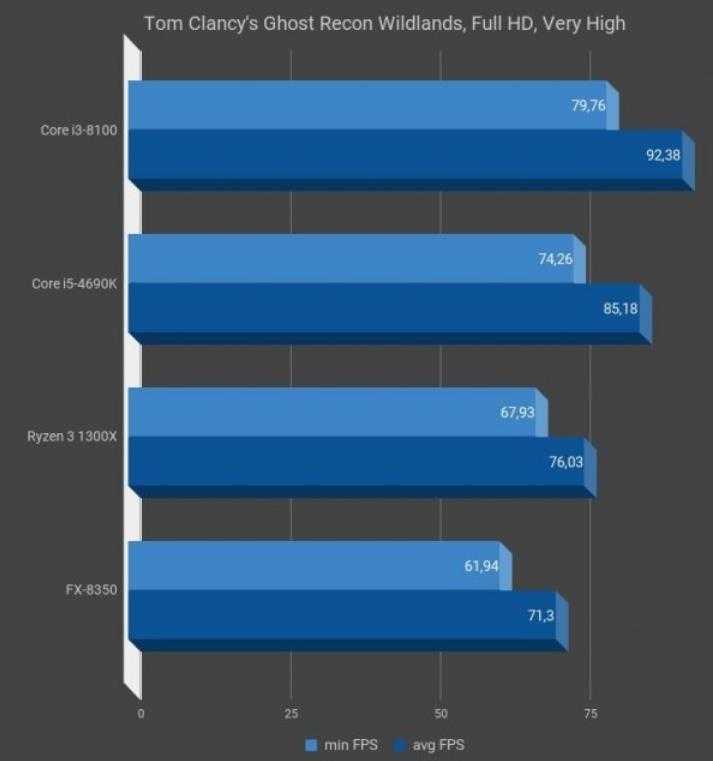
| CPU-Z — Multi-thread & single thread score | |
|---|---|
| Intel Core i5-8500 |
463 2.725 |
| Intel Core i3-8100 |
422 1.654 |
In single core, the difference is 10%. In multi-core, the difference in terms of gap is 65%.
Note: Commissions may be earned from the links above. These scores are only an
average of the performances got with these processors, you may get different results.
CPU-Z is a system information software that provides the name of the processor, its model number, the codename, the cache levels, the package, the process. It can also gives data about the mainboard, the memory. It makes real time measurement, with finally a benchmark for the single thread, as well as for the multi thread.
| Cinebench R15 — Multi-thread & single thread score | |
|---|---|
| Intel Core i5-8500 |
174 981 |
| Intel Core i3-8100 |
154 616 |
In single core, the difference is 13%. In multi-core, the difference in terms of gap is 59%.
In multi-core, the difference in terms of gap is 59%.
Note: Commissions may be earned from the links above. These scores are only an
average of the performances got with these processors, you may get different results.
Cinebench R15 evaluates the performance of CPU calculations by restoring a photorealistic 3D scene. The scene has 2,000 objects, 300,000 polygons, uses sharp and fuzzy reflections, bright areas, shadows, procedural shaders, antialiasing, and so on. The faster the rendering of the scene is created, the more powerful the PC is, with a high number of points.
| Cinebench R20 — Multi-thread & single thread score | |
|---|---|
| Intel Core i5-8500 |
402 2.229 |
| Intel Core i3-8100 |
363 1.408 |
In single core, the difference is 11%. In multi-core, the difference in terms of gap is 58%.
In multi-core, the difference in terms of gap is 58%.
Note: Commissions may be earned from the links above. These scores are only an
average of the performances got with these processors, you may get different results.
Cinebench R20 is a multi-platform test software which allows to evaluate the hardware capacities of a device such as a computer, a tablet, a server. This version of Cinebench takes into account recent developments in processors with multiple cores and the latest improvements in rendering techniques. The evaluation is ultimately even more relevant.
| Cinebench R23 — Multi-thread & single thread score | |
|---|---|
| Intel Core i5-8500 |
943 5.526 |
| Intel Core i3-8100 |
707 2.745 |
In single core, the difference is 33%. In multi-core, the difference in terms of gap is 101%.
In multi-core, the difference in terms of gap is 101%.
Note: Commissions may be earned from the links above. These scores are only an
average of the performances got with these processors, you may get different results.
Cinebench R23 is cross-platform testing software that allows you to assess the hardware capabilities of a device such as a computer, tablet, server. This version of Cinebench takes into account recent developments in processors with multiple cores and the latest improvements in rendering techniques. The evaluation is ultimately even more relevant. The test scene contains no less than 2,000 objects and more than 300,000 polygons in total.
| PassMark — CPU Mark & single thread | |
|---|---|
| Intel Core i5-8500 |
2.483 9.596 |
| Intel Core i3-8100 |
2.231 6.  120 120 |
In single core, the difference is 11%. In multi-core, the difference in terms of gap is 57%.
Note: Commissions may be earned from the links above. These scores are only an
average of the performances got with these processors, you may get different results.
PassMark is a benchmarking software that performs several performance tests including prime numbers, integers, floating point, compression, physics, extended instructions, encoding, sorting. The higher the score is, the higher is the device capacity.
On Windows 64-bit:
| Geekbench 4 — Multi-core & single core score — Windows 64-bit | |
|---|---|
| Intel Core i5-8500 |
4.793 18.008 |
| Intel Core i3-8100 |
4.327 12.377 |
In single core, the difference is 11%.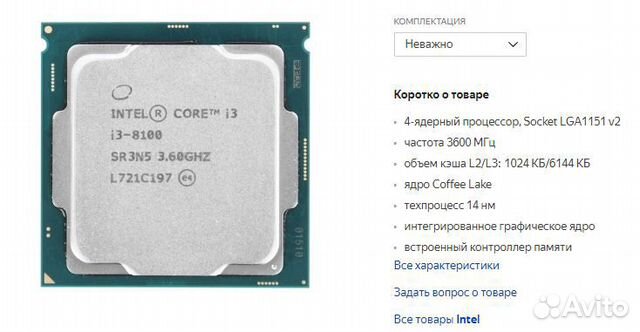 In multi-core, the difference in terms of gap is 45%.
In multi-core, the difference in terms of gap is 45%.
On Linux 64-bit:
| Geekbench 4 — Multi-core & single core score — Linux 64-bit | |
|---|---|
| Intel Core i5-8500 |
5.426 20.230 |
| Intel Core i3-8100 |
4.665 12.104 |
In single core, the difference is 16%. In multi-core, the difference in terms of gap is 67%.
On Android 64-bit:
| Geekbench 4 — Multi-core & single core score — Android 64-bit | |
|---|---|
| Intel Core i5-8500 |
4.413 17.004 |
| Intel Core i3-8100 |
3.131 7.065 |
In single core, the difference is 41%. In multi-core, the difference in terms of gap is 141%.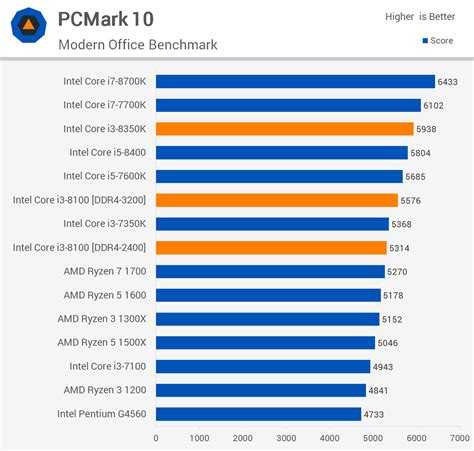
On Mac OS X 64-bit:
| Geekbench 4 — Multi-core & single core score — Mac OS X 64-bit | |
|---|---|
| Intel Core i5-8500 |
5.164 20.147 |
| Intel Core i3-8100 |
4.480 13.074 |
In single core, the difference is 15%. In multi-core, the difference in terms of gap is 54%.
Note: Commissions may be earned from the links above. These scores are only an
average of the performances got with these processors, you may get different results.
Geekbench 4 is a complete benchmark platform with several types of tests, including data compression, images, AES encryption, SQL encoding, HTML, PDF file rendering, matrix computation, Fast Fourier Transform, 3D object simulation, photo editing, memory testing. This allows us to better visualize the respective power of these devices. For each result, we took an average of 250 values on the famous benchmark software.
For each result, we took an average of 250 values on the famous benchmark software.
On Windows:
| Geekbench 5 — Multi-core & single core score — Windows | |
|---|---|
| Intel Core i5-8500 |
1.156 5.365 |
| Intel Core i3-8100 |
962 3.031 |
In single core, the difference is 20%. In multi-core, the difference in terms of gap is 77%.
On Linux:
| Geekbench 5 — Multi-core & single core score — Linux | |
|---|---|
| Intel Core i5-8500 |
1.157 5.473 |
| Intel Core i3-8100 |
1.027 3.272 |
In single core, the difference is 13%. In multi-core, the difference in terms of gap is 67%.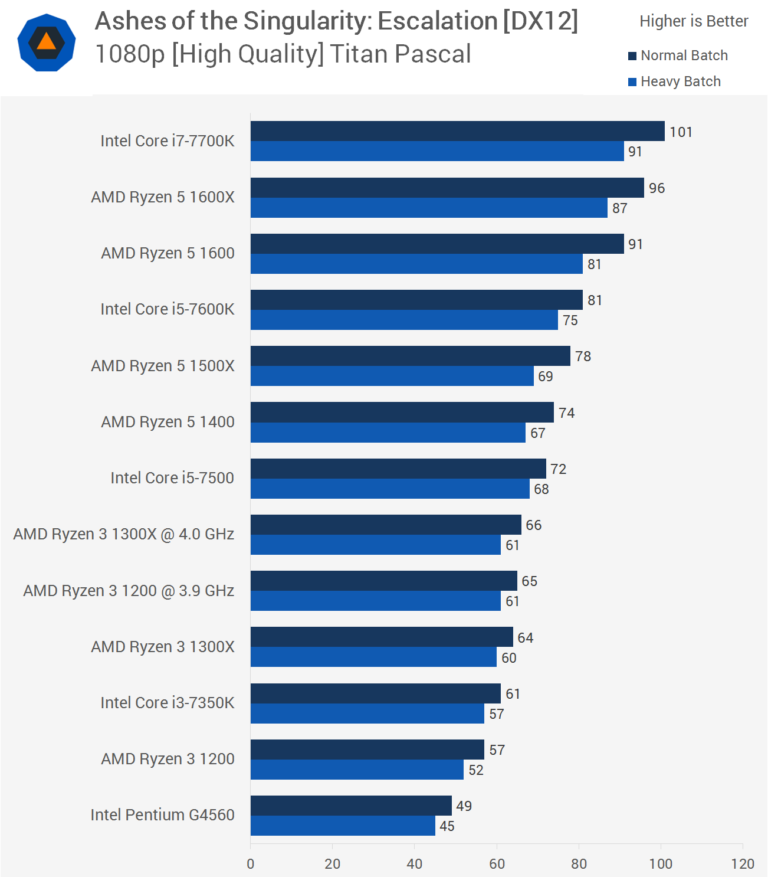
On macOS:
| Geekbench 5 — Multi-core & single core score — macOS | |
|---|---|
| Intel Core i5-8500 |
1.047 5.236 |
| Intel Core i3-8100 |
932 3.221 |
In single core, the difference is 12%. In multi-core, the difference in terms of gap is 63%.
Note: Commissions may be earned from the links above. These scores are only an
average of the performances got with these processors, you may get different results.
Geekbench 5 is a software for measuring the performance of a computer system, for fixed devices, mobile devices, servers. This platform makes it possible to better compare the power of the CPU, the computing power and to compare it with similar or totally different systems. Geekbench 5 includes new workloads that represent work tasks and applications that we can find in reality.
Equivalence:
Intel Core i3-8100 AMD equivalentIntel Core i5-8500 AMD equivalent
See also:
Intel Core i3-8100BIntel Core i3-8100TIntel Core i3-8109U
Intel Core i5-8500BIntel Core i5-8500T
Intel Core i5-8500 vs. Intel Core i3-8100
Intel Core i5-8500
The Intel Core i5-8500 operates with 6 cores and 6 CPU threads. It run at 4.10 GHz base 3.70 GHz all cores while the TDP is set at 65 W.The processor is attached to the LGA 1151-2 CPU socket. This version includes 9.00 MB of L3 cache on one chip, supports 2 memory channels to support DDR4-2666 RAM and features 3.0 PCIe Gen 16 lanes. Tjunction keeps below — degrees C. In particular, Coffee Lake S Architecture is enhanced with 14 nm technology and supports VT-x, VT-x EPT, VT-d. The product was launched on Q1/2018
Intel Core i3-8100
The Intel Core i3-8100 operates with 4 cores and 6 CPU threads. It run at No turbo base No turbo all cores while the TDP is set at 65 W.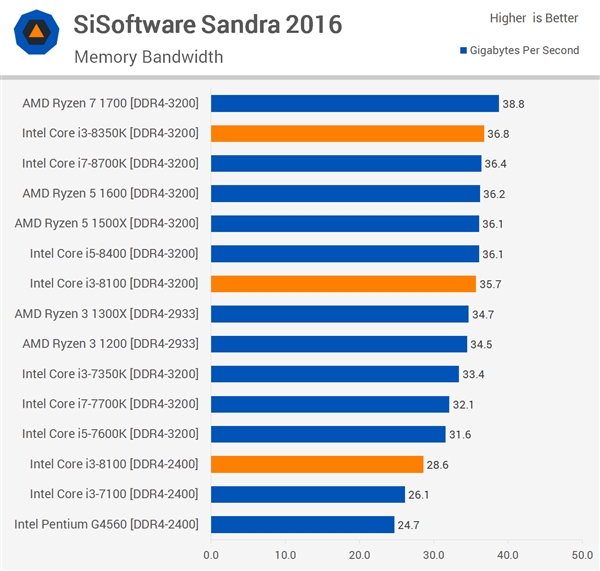 The processor is attached to the LGA 1151-2 CPU socket. This version includes 6.00 MB of L3 cache on one chip, supports 2 memory channels to support DDR4-2400 RAM and features 3.0 PCIe Gen 16 lanes. Tjunction keeps below 100 °C degrees C. In particular, Coffee Lake S Architecture is enhanced with 14 nm technology and supports VT-x, VT-x EPT, VT-d. The product was launched on Q4/2017
The processor is attached to the LGA 1151-2 CPU socket. This version includes 6.00 MB of L3 cache on one chip, supports 2 memory channels to support DDR4-2400 RAM and features 3.0 PCIe Gen 16 lanes. Tjunction keeps below 100 °C degrees C. In particular, Coffee Lake S Architecture is enhanced with 14 nm technology and supports VT-x, VT-x EPT, VT-d. The product was launched on Q4/2017
Intel Core i5-8500
Intel Core i3-8100
Compare Detail
| 3.00 GHz | Frequency | 3.60 GHz |
| 6 | Cores | 4 |
| 4.10 GHz | Turbo (1 Core) | No turbo |
| 3.70 GHz | Turbo (All Cores) | No turbo |
| No | Hyperthreading | No |
| No | Overclocking | No |
| normal | Core Architecture | normal |
|
Intel UHD Graphics 630 |
GPU |
Intel UHD Graphics 630 |
1. 15 GHz 15 GHz |
GPU (Turbo) | 1.10 GHz |
| 14 nm | Technology | 14 nm |
| 1.15 GHz | GPU (Turbo) | 1.10 GHz |
| 12 | DirectX Version | 12 |
| 3 | Max. displays | 3 |
| DDR4-2666 | Memory | DDR4-2400 |
| 2 | Memory channels | 2 |
| Max memory | ||
| No | ECC | Yes |
| — | L2 Cache | — |
| 9.00 MB | L3 Cache | 6.00 MB |
| 3.0 | PCIe version | 3.0 |
| 16 | PCIe lanes | 16 |
| 14 nm | Technology | 14 nm |
| LGA 1151-2 | Socket | LGA 1151-2 |
| 65 W | TDP | 65 W |
| VT-x, VT-x EPT, VT-d | Virtualization | VT-x, VT-x EPT, VT-d |
| Q1/2018 | Release date | Q4/2017 |
|
Show more data |
Show more data |
Cinebench R23 (Single-Core)
Cinebench R23 is the successor of Cinebench R20 and is also based on the Cinema 4 Suite.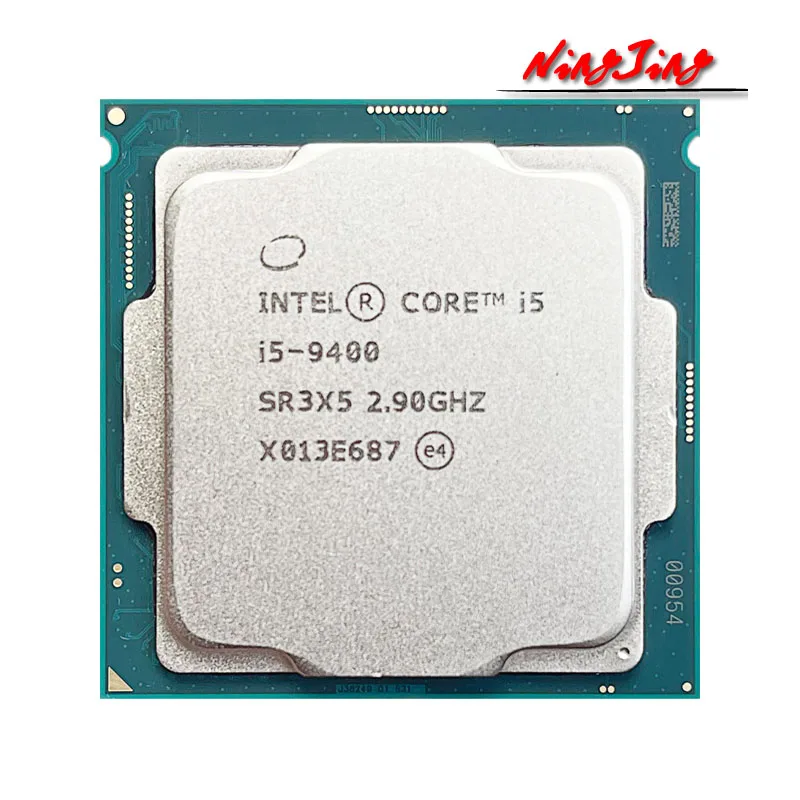 Cinema 4 is a worldwide used software to create 3D forms. The single-core test only uses one CPU core, the amount of cores or hyperthreading ability doesn’t count.
Cinema 4 is a worldwide used software to create 3D forms. The single-core test only uses one CPU core, the amount of cores or hyperthreading ability doesn’t count.
Cinebench R23 (Multi-Core)
Cinebench R23 is the successor of Cinebench R20 and is also based on the Cinema 4 Suite. Cinema 4 is a worldwide used software to create 3D forms. The multi-core test involves all CPU cores and taks a big advantage of hyperthreading.
Cinebench R20 (Single-Core)
Cinebench R20 is the successor of Cinebench R15 and is also based on the Cinema 4 Suite. Cinema 4 is a worldwide used software to create 3D forms. The single-core test only uses one CPU core, the amount of cores or hyperthreading ability doesn’t count.
Cinebench R20 (Multi-Core)
Cinebench R20 is the successor of Cinebench R15 and is also based on the Cinema 4 Suite. Cinema 4 is a worldwide used software to create 3D forms. The multi-core test involves all CPU cores and taks a big advantage of hyperthreading.
Cinebench R15 (Single-Core)
Cinebench R15 is the successor of Cinebench 11.5 and is also based on the Cinema 4 Suite. Cinema 4 is a worldwide used software to create 3D forms. The single-core test only uses one CPU core, the amount of cores or hyperthreading ability doesn’t count.
Cinebench R15 (Multi-Core)
Cinebench R15 is the successor of Cinebench 11.5 and is also based on the Cinema 4 Suite. Cinema 4 is a worldwide used software to create 3D forms. The multi-core test involves all CPU cores and taks a big advantage of hyperthreading.
Geekbench 5, 64bit (Single-Core)
Geekbench 5 is a cross plattform benchmark that heavily uses the systems memory. A fast memory will push the result a lot. The single-core test only uses one CPU core, the amount of cores or hyperthreading ability doesn’t count.
Geekbench 5, 64bit (Multi-Core)
Geekbench 5 is a cross plattform benchmark that heavily uses the systems memory. A fast memory will push the result a lot. The multi-core test involves all CPU cores and taks a big advantage of hyperthreading.
The multi-core test involves all CPU cores and taks a big advantage of hyperthreading.
iGPU — FP32 Performance (Single-precision GFLOPS)
The theoretical computing performance of the internal graphics unit of the processor with simple accuracy (32 bit) in GFLOPS. GFLOPS indicates how many billion floating point operations the iGPU can perform per second.
Geekbench 3, 64bit (Single-Core)
Geekbench 3 is a cross plattform benchmark that heavily uses the systems memory. A fast memory will push the result a lot. The single-core test only uses one CPU core, the amount of cores or hyperthreading ability doesn’t count.
Geekbench 3, 64bit (Multi-Core)
Geekbench 3 is a cross plattform benchmark that heavily uses the systems memory. A fast memory will push the result a lot. The multi-core test involves all CPU cores and taks a big advantage of hyperthreading.
Cinebench R11.5, 64bit (Single-Core)
Cinebench 11.5 is based on the Cinema 4D Suite, a software that is popular to generate forms and other stuff in 3D.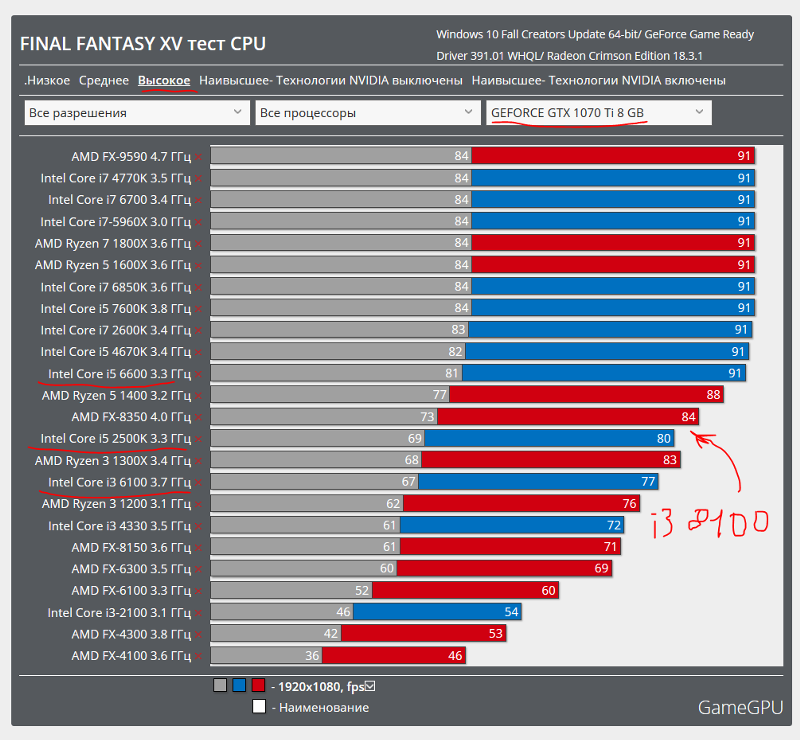 The single-core test only uses one CPU core, the amount of cores or hyperthreading ability doesn’t count.
The single-core test only uses one CPU core, the amount of cores or hyperthreading ability doesn’t count.
Cinebench R11.5, 64bit (Multi-Core)
Cinebench 11.5 is based on the Cinema 4D Suite, a software that is popular to generate forms and other stuff in 3D. The multi-core test involves all CPU cores and taks a big advantage of hyperthreading.
Cinebench R11.5, 64bit (iGPU, OpenGL)
Cinebench 11.5 is based on the Cinema 4D Suite, a software that is popular to generate forms and other stuff in 3D. The iGPU test uses the CPU internal graphic unit to execute OpenGL commands.
Estimated results for PassMark CPU Mark
Some of the CPUs listed below have been benchmarked by CPU-Comparison. However the majority of CPUs have not been tested and the results have been estimated by a CPU-Comparison’s secret proprietary formula. As such they do not accurately reflect the actual Passmark CPU mark values and are not endorsed by PassMark Software Pty Ltd.
Electric Usage Estimate
Average hours of use per day
Average CPU Utilization (0-100%)
Power cost, dollar per kWh
Electric Usage Estimate
Average hours of use per day
Average CPU Utilization (0-100%)
Power cost, dollar per kWh
| Intel Core i5-8500 | Intel Core i3-8100 | |
| 65 W | Max TDP | 65 W |
| NA | Power consumption per day (kWh) | NA |
| NA | Running cost per day | NA |
| NA | Power consumption per year (kWh) | NA |
| NA | Running cost per year | NA |
Popular Comparision
Comments
Intel Core i3-8100T vs Intel Core i5-8500
Comparative analysis of Intel Core i3-8100T and Intel Core i5-8500 processors for all known characteristics in the following categories: Essentials, Performance, Memory, Graphics, Graphics interfaces, Graphics image quality, Graphics API support, Compatibility, Peripherals, Security & Reliability, Advanced Technologies, Virtualization.
Benchmark processor performance analysis: PassMark — Single thread mark, PassMark — CPU mark, Geekbench 4 — Single Core, Geekbench 4 — Multi-Core, GFXBench 4.0 — Car Chase Offscreen (Frames), GFXBench 4.0 — Car Chase Offscreen (Fps), 3DMark Fire Strike — Physics Score, CompuBench 1.5 Desktop — Face Detection (mPixels/s), CompuBench 1.5 Desktop — Ocean Surface Simulation (Frames/s), CompuBench 1.5 Desktop — T-Rex (Frames/s), CompuBench 1.5 Desktop — Video Composition (Frames/s), CompuBench 1.5 Desktop — Bitcoin Mining (mHash/s), GFXBench 4.0 — Manhattan (Frames), GFXBench 4.0 — T-Rex (Frames), GFXBench 4.0 — Manhattan (Fps), GFXBench 4.0 — T-Rex (Fps).
Intel Core i3-8100T
Buy on Amazon
vs
Intel Core i5-8500
Buy on Amazon
Differences
Reasons to consider the Intel Core i3-8100T
- CPU is newer: launch date 2 month(s) later
- Around 86% lower typical power consumption: 35 Watt vs 65 Watt
| Launch date | April 2018 vs February 2018 |
| Thermal Design Power (TDP) | 35 Watt vs 65 Watt |
Reasons to consider the Intel Core i5-8500
- 2 more cores, run more applications at once: 6 vs 4
- 2 more threads: 6 vs 4
- Around 32% higher clock speed: 4.
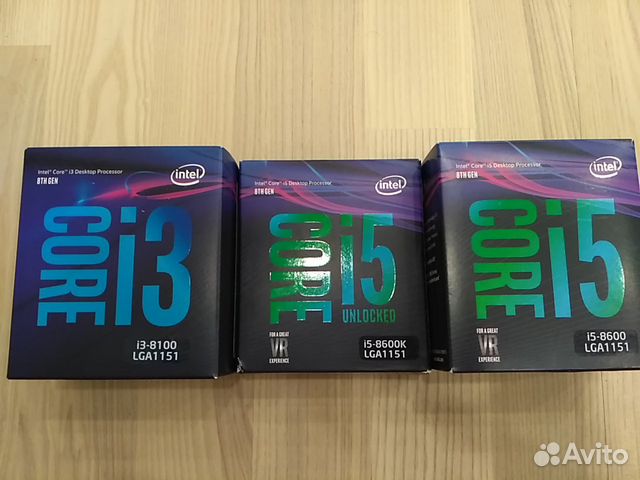 10 GHz vs 3.1 GHz
10 GHz vs 3.1 GHz - Around 22% higher maximum core temperature: 100°C vs 82°C
- Around 50% more L1 cache; more data can be stored in the L1 cache for quick access later
- Around 50% more L2 cache; more data can be stored in the L2 cache for quick access later
- Around 50% more L3 cache; more data can be stored in the L3 cache for quick access later
- 2x more maximum memory size: 128 GB vs 64 GB
- Around 29% better performance in PassMark — Single thread mark: 2480 vs 1918
- Around 82% better performance in PassMark — CPU mark: 9585 vs 5255
- Around 29% better performance in Geekbench 4 — Single Core: 1074 vs 833
- Around 75% better performance in Geekbench 4 — Multi-Core: 4700 vs 2689
- Around 42% better performance in GFXBench 4.0 — Car Chase Offscreen (Frames): 1943 vs 1366
- Around 42% better performance in GFXBench 4.0 — Car Chase Offscreen (Fps): 1943 vs 1366
| Number of cores | 6 vs 4 |
| Number of threads | 6 vs 4 |
| Maximum frequency | 4.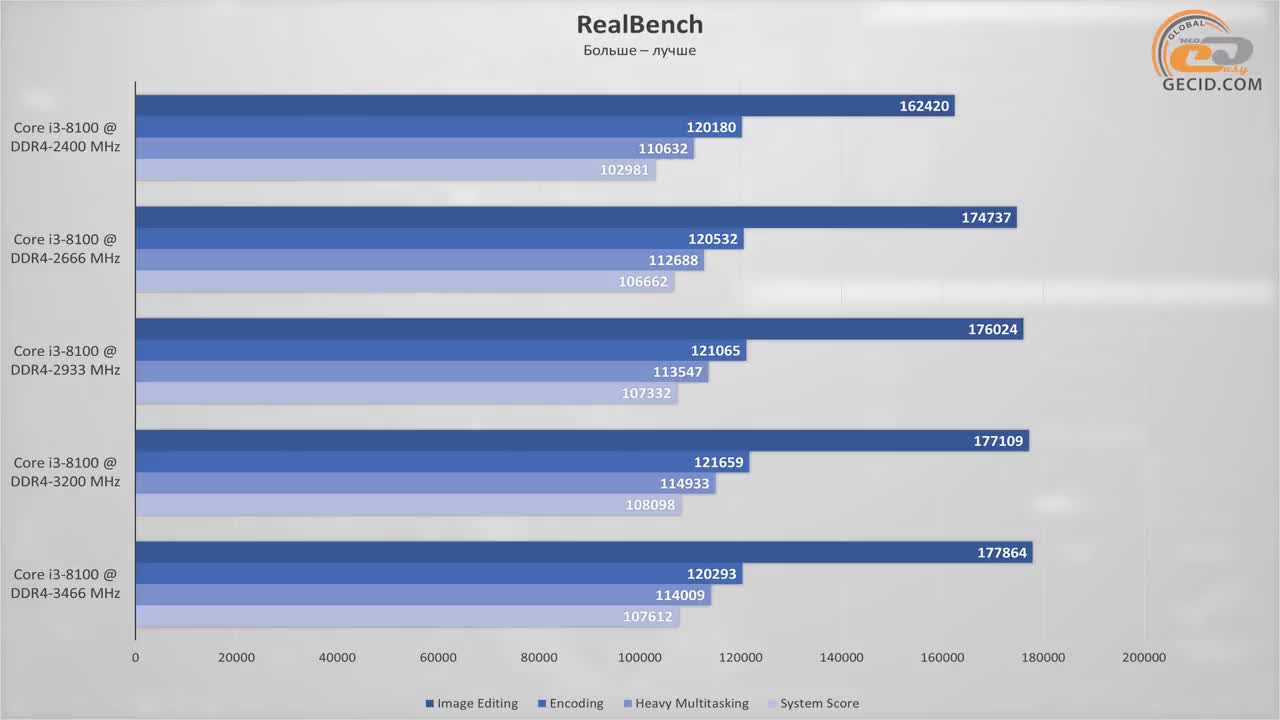 10 GHz vs 3.1 GHz 10 GHz vs 3.1 GHz |
| Maximum core temperature | 100°C vs 82°C |
| L1 cache | 64 KB (per core) vs 64 KB (per core) |
| L2 cache | 256 KB (per core) vs 256 KB (per core) |
| L3 cache | 9216 KB (shared) vs 6144 KB (shared) |
| Maximum memory size | 128 GB vs 64 GB |
| PassMark — Single thread mark | 2480 vs 1918 |
| PassMark — CPU mark | 9585 vs 5255 |
| Geekbench 4 — Single Core | 1074 vs 833 |
| Geekbench 4 — Multi-Core | 4700 vs 2689 |
GFXBench 4. 0 — Car Chase Offscreen (Frames) 0 — Car Chase Offscreen (Frames) |
1943 vs 1366 |
| GFXBench 4.0 — Car Chase Offscreen (Fps) | 1943 vs 1366 |
Compare benchmarks
CPU 1: Intel Core i3-8100T
CPU 2: Intel Core i5-8500
| PassMark — Single thread mark |
|
|
||
| PassMark — CPU mark |
|
|
||
| Geekbench 4 — Single Core |
|
|
||
| Geekbench 4 — Multi-Core |
|
|
||
GFXBench 4. 0 — Car Chase Offscreen (Frames) 0 — Car Chase Offscreen (Frames) |
|
|
||
| GFXBench 4.0 — Car Chase Offscreen (Fps) |
|
|
| Name | Intel Core i3-8100T | Intel Core i5-8500 |
|---|---|---|
| PassMark — Single thread mark | 1918 | 2480 |
| PassMark — CPU mark | 5255 | 9585 |
| Geekbench 4 — Single Core | 833 | 1074 |
| Geekbench 4 — Multi-Core | 2689 | 4700 |
GFXBench 4.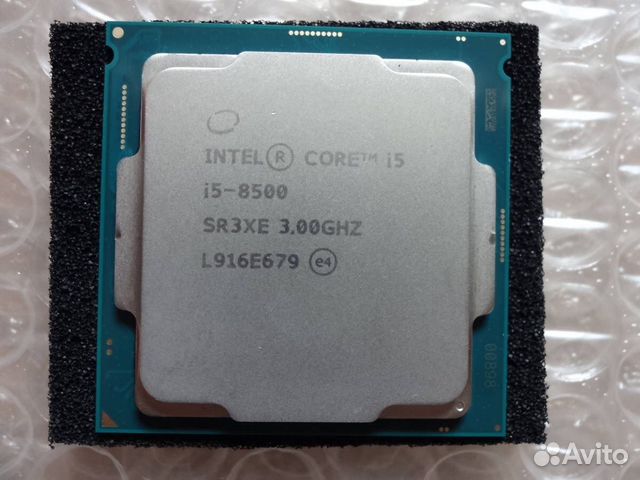 0 — Car Chase Offscreen (Frames) 0 — Car Chase Offscreen (Frames) |
1366 | 1943 |
| GFXBench 4.0 — Car Chase Offscreen (Fps) | 1366 | 1943 |
| 3DMark Fire Strike — Physics Score | 5101 | |
| CompuBench 1.5 Desktop — Face Detection (mPixels/s) | 5.925 | |
| CompuBench 1.5 Desktop — Ocean Surface Simulation (Frames/s) | 77.276 | |
| CompuBench 1.5 Desktop — T-Rex (Frames/s) | 0.766 | |
CompuBench 1.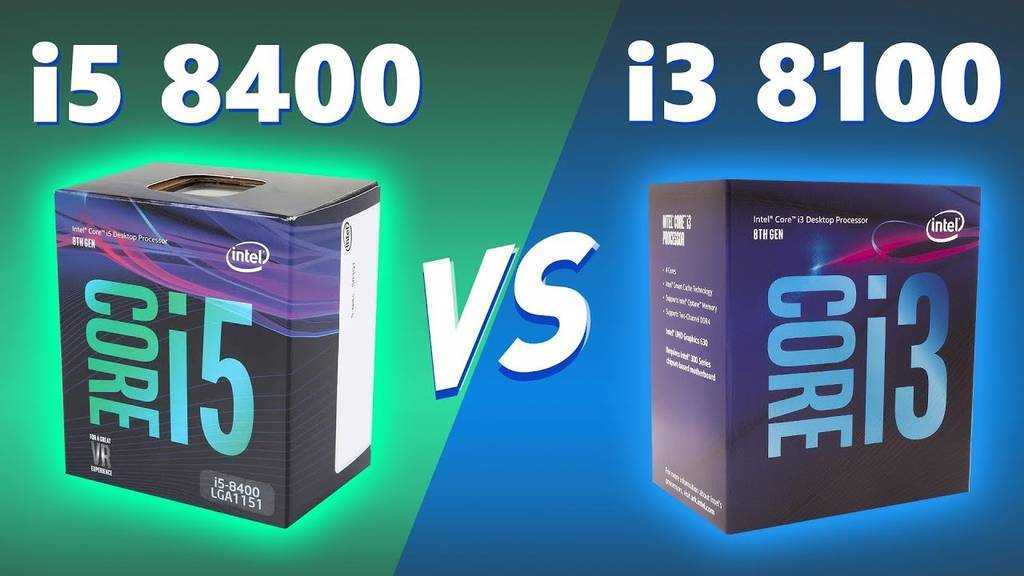 5 Desktop — Video Composition (Frames/s) 5 Desktop — Video Composition (Frames/s) |
3.864 | |
| CompuBench 1.5 Desktop — Bitcoin Mining (mHash/s) | 10.65 | |
| GFXBench 4.0 — Manhattan (Frames) | 1058 | |
| GFXBench 4.0 — T-Rex (Frames) | 1800 | |
| GFXBench 4.0 — Manhattan (Fps) | 1058 | |
| GFXBench 4.0 — T-Rex (Fps) | 1800 |
Compare specifications (specs)
| Intel Core i3-8100T | Intel Core i5-8500 | |
|---|---|---|
| Architecture codename | Coffee Lake | Coffee Lake |
| Launch date | April 2018 | February 2018 |
| Place in performance rating | 1240 | 1184 |
| Price now | $195. 99 99 |
$229 |
| Processor Number | i3-8100T | i5-8500 |
| Series | 8th Generation Intel® Core™ i3 Processors | 8th Generation Intel® Core™ i5 Processors |
| Status | Launched | Launched |
| Value for money (0-100) | 11.16 | 15.36 |
| Vertical segment | Desktop | Desktop |
| 64 bit support | ||
| Base frequency | 3. 10 GHz 10 GHz |
3.00 GHz |
| Bus Speed | 8 GT/s DMI3 | 8 GT/s DMI3 |
| L1 cache | 64 KB (per core) | 64 KB (per core) |
| L2 cache | 256 KB (per core) | 256 KB (per core) |
| L3 cache | 6144 KB (shared) | 9216 KB (shared) |
| Manufacturing process technology | 14 nm | 14 nm |
| Maximum case temperature (TCase) | 72 °C | 72 °C |
| Maximum core temperature | 82°C | 100°C |
| Maximum frequency | 3.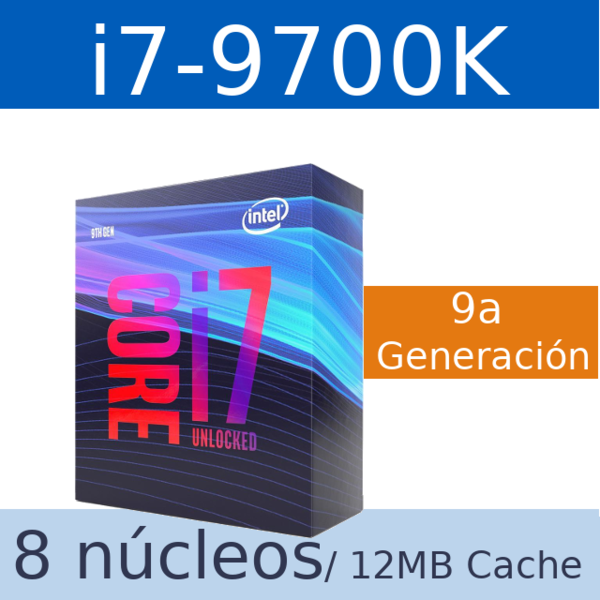 1 GHz 1 GHz |
4.10 GHz |
| Number of cores | 4 | 6 |
| Number of threads | 4 | 6 |
| Max memory channels | 2 | 2 |
| Maximum memory bandwidth | 37.5 GB/s | 41.6 GB/s |
| Maximum memory size | 64 GB | 128 GB |
| Supported memory types | DDR4-2400 | DDR4-2666 |
| Device ID | 0x3E91 | 0x3E92 |
| Graphics base frequency | 350 MHz | 350 MHz |
| Graphics max dynamic frequency | 1. |
1.10 GHz |
| Intel® Clear Video HD technology | ||
| Intel® Clear Video technology | ||
| Intel® InTru™ 3D technology | ||
| Intel® Quick Sync Video | ||
| Max video memory | 64 GB | 64 GB |
| Processor graphics | Intel® UHD Graphics 630 | Intel® UHD Graphics 630 |
| Number of displays supported | 3 | 3 |
| 4K resolution support | ||
| Max resolution over DisplayPort | [email protected] | [email protected] |
| Max resolution over eDP | [email protected] | [email protected] |
| Max resolution over HDMI 1. |
[email protected] | [email protected] |
| DirectX | 12 | 12 |
| OpenGL | 4.5 | 4.5 |
| Configurable TDP-down | 25 W | |
| Configurable TDP-down Frequency | 2.40 GHz | |
| Low Halogen Options Available | ||
| Max number of CPUs in a configuration | 1 | 1 |
| Package Size | 37. |
37.5mm x 37.5mm |
| Sockets supported | FCLGA1151 | FCLGA1151 |
| Thermal Design Power (TDP) | 35 Watt | 65 Watt |
| Thermal Solution | PCG 2015A (35W) | PCG 2015C (65W) |
| Max number of PCIe lanes | 16 | 16 |
| PCI Express revision | 3.0 | 3.0 |
| PCIe configurations | Up to 1×16, 2×8, 1×8+2×4 | Up to 1×16, 2×8, 1×8+2×4 |
| Scalability | 1S Only | 1S Only |
| Execute Disable Bit (EDB) | ||
| Intel® Identity Protection technology | ||
| Intel® Memory Protection Extensions (Intel® MPX) | ||
| Intel® OS Guard | ||
| Intel® Secure Key technology | ||
| Intel® Software Guard Extensions (Intel® SGX) | ||
| Intel® Trusted Execution technology (TXT) | ||
| Secure Boot | ||
| Enhanced Intel SpeedStep® technology | ||
| Idle States | ||
| Instruction set extensions | Intel® SSE4. |
Intel® SSE4.1, Intel® SSE4.2, Intel® AVX2 |
| Intel 64 | ||
| Intel® Advanced Vector Extensions (AVX) | ||
| Intel® AES New Instructions | ||
| Intel® Hyper-Threading technology | ||
| Intel® Optane™ Memory Supported | ||
| Intel® Stable Image Platform Program (SIPP) | ||
| Intel® TSX-NI | ||
| Intel® Turbo Boost technology | ||
| Intel® vPro™ Platform Eligibility | ||
| Thermal Monitoring | ||
| Intel® Virtualization Technology (VT-x) | ||
| Intel® Virtualization Technology for Directed I/O (VT-d) | ||
| Intel® VT-x with Extended Page Tables (EPT) |
Intel Core i3-8100 vs Intel Core i5-8500: What is the difference?
53 BALLLA
Intel Core i3-8100
57 Ballla
Intel Core i5-8500 9000 Why is Intel Core i3-8100 better than Intel Core i5-8500?
- Supports memory troubleshooting code?
- 6 higher hour multiplier?
36 vs 30
Why is Intel Core i5-8500 better than Intel Core i3-8100?
- 25% higher CPU speed?
6 x 3GHz vs 4 x 3.6GHz
- 266MHz higher RAM speed?
2666MHz vs 2400MHz - 2 more CPU threads?
6 vs 4 - 0.5MB more L2 cache?
1.5MB vs 1MB - 15.8% higher PassMark result?
9476 vs 8183 - 3MB more L3 cache?
9MB vs 6MB - 128KB more L1 cache?
384KB vs 256KB - 3.2GB/s more memory bandwidth?
41.6GB/s vs 38.4GB/s
Which comparisons are the most popular?
Intel Core i3-8100
vs
Intel Core i5-6500
Intel Core i5-8500
VS
Intel Core i3-10100
Intel Core i3-8100
VS
Intel Core M3100Y
Intel Core i5-8500
Intel I5-9500
9000 9000 9000 8100
VS
Intel Core i3-8100t
Intel Core i5-8500
VS
Intel Core i5-8500T
Intel Core I3-8100 VS
ITEL PENTIUM GOLD GOLD GOLD GOLD GREEM 8500
vs
Intel Core i7-6700
Intel Core i3-8100
VS
Intel Core i5-7500
Intel Core i5-8500
INTEL CORE vs
Intel Celeron 6305
Intel Core i5-8500
VS
Intel Core i7-8700
Intel Core i3-8100
9000 vs
Intel Core i5-7500
Intel Core i3-8100
VS
Intel Core i7-3770
Intel Core i5-8500
Intel Core i3-9100
-8100
VS
000 Core Core 6700
Intel Core i5-8500
VS
Intel Core i5-9400
Intel Core i3-8100
VS
Intel Core I3-10100
Costs
Users
Productive Productive Productive Productive Production0002 1.
CPU speed
4 x 3.6GHz
6 x 3GHz
CPU speed indicates how many processing cycles per second a processor can perform, considering all its cores (processors). It is calculated by adding the clock speeds of each core or, in the case of multi-core processors, each group of cores.
2nd processor thread
More threads result in better performance and better multitasking.
3. turbo clock speed
Unknown. Help us offer a price. (Intel Core i3-8100)
4.1GHz
When the processor is running below its limits, it can jump to a higher clock speed to increase performance.
4. Unlocked
✖Intel Core i3-8100
✖Intel Core i5-8500
Some processors come with an unlocked multiplier and are easier to overclock, allowing for better performance in games and other applications.
5.L2 cache
More L2 scratchpad memory results in faster results in CPU and system performance tuning.
6.L3 cache
More L3 scratchpad memory results in faster results in CPU and system performance tuning.
7.L1 cache
More L1 cache results in faster results in CPU and system performance tuning.
8.core L2
0.25MB/core
0.25MB/core
More data can be stored in the L2 scratchpad for access by each processor core.
9.core L3
1.5MB/core
1.5MB/core
More data can be stored in L3 scratchpad memory to access each processor core.
Memory
1.RAM speed
2400MHz
2666MHz
Can support faster memory which speeds up system performance.
2.max memory bandwidth
38.4GB/s
41.6GB/s
This is the maximum rate at which data can be read from or stored in memory.
3. DDR version
DDR (Dynamic Dynamic Random Access Memory Double Data Rate) is the most common type of RAM. New versions of DDR memory support higher maximum speeds and are more energy efficient.
4.Memory channels
More memory channels increase the speed of data transfer between memory and processor.
5.maximum memory capacity
Maximum memory capacity (RAM).
6.bus baud rate
The bus is responsible for transferring data between different components of a computer or device.
7. Supports Memory Error Code
✔Intel Core i3-8100
✖Intel Core i5-8500
Memory Error Code can detect and repair data corruption. It is used when necessary to avoid distortion, such as in scientific computing or when starting a server.
8. eMMC version
Unknown. Help us offer a price. (Intel Core i3-8100)
Unknown. Help us offer a price. (Intel Core i5-8500)
The newer version of eMMC — built-in flash memory card — speeds up the memory interface, has a positive effect on device performance, for example, when transferring files from a computer to internal memory via USB.
9.bus frequency
Unknown. Help us offer a price. (Intel Core i3-8100)
Unknown. Help us offer a price. (Intel Core i5-8500)
The bus is responsible for transferring data between various components of a computer or device
Geotagging
1. PassMark result
This test measures processor performance using multi-threading.
2. PassMark result (single)
This test measures processor performance using a thread of execution.
3.Geekbench 5 result (multi-core)
Geekbench 5 is a cross-platform benchmark that measures the performance of a multi-core processor. (Source: Primate Labs,2022)
4. Cinebench R20 result (multi-core)
Unknown. Help us offer a price. (Intel Core i3-8100)
Cinebench R20 is a benchmark that measures the performance of a multi-core processor by rendering a 3D scene.
5.Cinebench R20 result (single core)
Unknown. Help us offer a price. (Intel Core i3-8100)
Cinebench R20 is a test to evaluate the performance of a single core processor when rendering a 3D scene.
6.Geekbench 5 result (single core)
Geekbench 5 is a cross-platform benchmark that measures the single core performance of a processor. (Source: Primate Labs, 2022)
7. Blender test result (bmw27)
Unknown. Help us offer a price. (Intel Core i3-8100)
420.7seconds
The Blender benchmark (bmw27) measures CPU performance by rendering a 3D scene. More powerful processors can render a scene in a shorter time.
8.Blender result (classroom)
Unknown. Help us offer a price. (Intel Core i3-8100)
1122.2seconds
The Blender benchmark (classroom) measures CPU performance by rendering a 3D scene. More powerful processors can render a scene in a shorter time.
9.performance per watt
Unknown. Help us offer a price. (Intel Core i3-8100)
This means that the processor is more efficient, resulting in more performance per watt of power used.
Functions
1.uses multithreading
✖Intel Core i3-8100
✔Intel Core i5-8500
physical processor core into logical cores, also known as threads. Thus, each core can run two instruction streams at the same time.
2. Has AES
✔Intel Core i3-8100
✔Intel Core i5-8500
AES is used to speed up encryption and decryption.
3. Has AVX
✔Intel Core i3-8100
✔Intel Core i5-8500
AVX is used to help speed up calculations in multimedia, scientific and financial applications, and to improve the performance of the Linux RAID program.
4.Version SSE
SSE is used to speed up multimedia tasks such as editing images or adjusting audio volume. Each new version contains new instructions and improvements.
5. Has F16C
✔Intel Core i3-8100
✔Intel Core i5-8500
F16C is used to speed up tasks such as image contrast adjustment or volume control.
6.bits transmitted at the same time
Unknown. Help us offer a price. (Intel Core i3-8100)
Unknown. Help us offer a price. (Intel Core i5-8500)
NEON provides faster media processing such as MP3 listening.
7. Has MMX
✔Intel Core i3-8100
✔Intel Core i5-8500
MMX is used to speed up tasks such as adjusting image contrast or adjusting volume.
8. Has TrustZone
✖Intel Core i3-8100
✖Intel Core i5-8500
The technology is integrated into the processor to ensure device security when using features such as mobile payments and streaming video using digital rights management technology ( DRM).
9.interface width
Unknown. Help us offer a price. (Intel Core i3-8100)
Unknown. Help us offer a price. (Intel Core i5-8500)
The processor can decode more instructions per clock (IPC), which means the processor performs better
Price comparison
Cancel
Which CPUs are better?
Intel Core i5 8500 vs i3 8100:
performance comparison
VS
Intel Core i5 8500
Intel Core i3 8100
Which is better: 6-core Intel Core i5 8500 at 3.0 GHz or i3 8100 with 4 cores at 3.6 GHz? To find out, read our comparison test of these 14nm desktop processors in popular benchmarks, games and heavy applications.
- Overview
- Differences
- Performance
- Features
- Comments
Overview
Overview and comparison of the main metrics from NanoReview
Single -flow performance
Rating in tests using one kernel
Core i5 8500
56
Core i3 8100
51
Multi -flow performance
Tests in benchmarks, where all nuclei
Core 8500 9000 28
Core i3 8100
18
Energy efficiency
Efficiency of energy consumption chip
Core i5 8500
46
Core i3 8100
44
Rating NanoreView
Final rating of the processor
Core i5 8500
43 9000 9000 37 9000 9000 9000 9000 9000 9000 9000 9000
Key differences
What are the main differences between 8100 and 8500
Reasons to choose Intel Core i5 8500
- Supports up to 128GB DDR4-2666
- Has 2 physical cores more
- Has 3 MB more L3 cache
- Introduced 6 months later than the competitor
- 4.
1 GB/s (11%) higher maximum memory bandwidth
Benchmark tests
Compare the results of processor tests in benchmarks
Cinebench R23 (single core)
Core i5 8500
+13%
1047
Core i3 8100
927
Cinebench R23 (multi-core)
Core i5 8500
+54%
5487
Core i3 8100
3571
Passmark CPU (single core)
Core i5 8500
+11%
2460
Core i3 8100
2222
Passmark CPU (multi-core)
Core i5 8500
+56%
9544
Core i3 8100
6129
Geekbench 5 (single core)
Core i5 8500
+8%
1026
Core i3 8100
946
Geekbench 5 (multi-core)
Core i5 8500
+46%
4834
Core i3 8100
3314
▶️ Add your score to Cinebench R23
Specifications
List of full technical specifications of the Intel Core i5 8500 and i3 8100
General information
| Manufacturer | Intel | Intel |
| Release date | April 3, 2018 | October 5, 2017 |
| Type | Desktop | Desktop |
| Instruction set architecture | x86-64 | x86-64 |
| Codename | Coffee Lake | Coffee Lake |
| Model number | i5-8500 | i3-8100 |
| Socket | LGA-1151 | LGA-1151 |
| Integrated graphics | UHD Graphics 630 | UHD Graphics 630 |
Performance
| Cores | 6 | 4 |
| Number of threads | 6 | 4 |
| Frequency | 3. |
3.6GHz |
| Max. frequency in Turbo Boost | 4.1 GHz | — |
| Bus frequency | 100 MHz | 100 MHz |
| Multiplier | 30x | 28x |
| Tire speed | 8 GT/s | 8 GT/s |
| Level 1 cache | 64KB (per core) | 64KB (per core) |
| Level 2 cache | 256KB (per core) | 256KB (per core) |
| Level 3 cache | 9MB (shared) | 6MB (shared) |
| Unlocked multiplier | No | No |
Power consumption
| Process | 14 nanometers | 14 nanometers |
| Power consumption (TDP) | 65 W | 65 W |
| Critical temperature | 100°C | 100°C |
| Integrated graphics | Intel UHD Graphics 630 | Intel UHD Graphics 630 |
| GPU clock | 350 MHz | 350 MHz |
| Boost GPU frequency | 1100 MHz | 1100 MHz |
| Shader blocks | 192 | 192 |
| TMUs | 24 | 24 |
| ROPs | 3 | 3 |
| Computer units | 24 | 24 |
| TGP | 15W | 15W |
| Max. |
4096×2304 — 60Hz | 4096×2304 — 60Hz |
Igpu Flops
Core i5 8500
0.38 Teraflops
Core i3 8100
0.38 Teraflops
Support Support
| DDR4-2666 | DDR4-2400 | |
| Max. size | 128 GB | 64 GB |
| Number of channels | 2 | 2 |
| Max. bandwidth | 41.6 GB/s | 37.5 GB/s |
| ECC support | No | Yes |
Other
| Official site | Site Intel Core i5 8500 | Site Intel Core i3 8100 |
| PCI Express version | 3.0 | 3.0 |
| Max. PCI Express lanes | 16 | 16 |
| Extended instructions | SSE4.1, SSE4.2, AVX-2 | SSE4.1, SSE4.2, AVX-2 |
Poll
What processor do you think is the best?
Core i5 8500
3 (100%)
Core i3 8100
0 (0%)
Total votes: 3
What will you choose: Intel Core i3 8100 or i5 8500?
Name
Message
Core i5-8500 vs.
Core i3-8100T
Core i5-8500 vs. Core i3-8100T — Th200
Contents
- Introduction
- Features
- Tests
- Key differences
- Conclusion
- Comments
Processor
Processor
Introduction
We compared two processors: Intel Core i5-8500 vs. Intel Core i3-8100T. On this page, you will learn about the key differences between them, as well as which one is the best in terms of features and performance.
Intel Core i5-8500 is a Core i5 (Coffee Lake) generation desktop processor released Feb 14th, 2018. It has 6 cores and 6 threads. Operates at a frequency of 3000 MHz and consumes up to 65 watts.
Intel Core i3-8100T is a Core i3 (Coffee Lake) generation desktop processor released on Apr 2nd, 2018. It has 4 cores and 4 threads. Operates at a frequency of 3100 MHz and consumes up to 35 watts.
Characteristics
Generation
Core i5 (Coffee Lake)
Core i3 (Coffee Lake)
Release date
FEB 14TH, 2018
APR 2ND, 2018
9000
Frequency
3000 MHz
3100 MHz
Turbbo frequency
4100 MHz
Nuclei
6
4 9000 )
cache L2
256K (Per Core)
256K (Per Core)
Building graphics
N/A
N/A
Support
DDR4-2666 MHZ DUAL-MHANNEL
DDR4- DDR4- 2666 MHz Dual-channel
ECC memory
No
No
PCI-Express
GEN 3, 16 Lanes (CPU Only)
Gen 3, 16 Lanes (CPU ONLY)
Instructions
AES-Ni, AVX, AVX2, AVX2, AVX2, AVX2, AVX2, BMI1, BMI2, Boost 2.0, CLMUL, EIST, F16C, FMA3, Intel 64, MMX, SSE, SSE2, SSE3, SSE4.2, SSSE3, TSX, TXT, VT-d, VT-x, XD bit
AES- NI, AVX, AVX2, BMI1, BMI2, Boost 2. 0, CLMUL, EIST, F16C, FMA3, Intel 64, MMX, SSE, SSE2, SSE3, SSE4.2, SSSE3, TSX, TXT, VT-d, VT-x, XD bit
Benchmarks
3DMark Physics
3DMark is a benchmarking tool designed and developed by UL to measure the performance of computer hardware. Upon completion, the program gives a score, where a higher value indicates better performance.
Intel Core i5-8500
Intel Core i3-8100T
Blender bmw27
Blender is the most popular 3D content creation software. It has its own test, which is widely used to determine the rendering speed of processors and video cards. We chose the bmw27 scene. The result of the test is the time taken to render the given scene.
Intel Core i5-8500
+130%
Intel Core i3-8100T
Geekbench 5 Multi-thread
GeekBench is a cross-platform benchmarking utility that runs a series of benchmarks that simulate real-life tasks. There are two versions of the program. This is a multi-threaded version, i.e. all cores are used, making it suitable for evaluating server performance.
Intel Core i5-8500
+73%
Intel Core i3-8100T
Geekbench 5 Single-thread
GeekBench is a cross-platform benchmarking utility that runs a series of benchmarks that simulate real-life tasks. There are two versions of the program. This is a single threaded version. Most applications (MS Word, web browsers, games) rarely use more than one thread at a time, making it suitable for performance evaluation in everyday tasks.
Intel Core i5-8500
+30%
Intel Core i3-8100T
Key differences
Why is Intel Core i5-8500 better than Intel Core i3-8100T?
Has 2 more cores — 6 vs 4
Has 2 more threads — 6 vs 4
Why is Intel Core i3-8100T better than Intel Core i5-8500?
Newer — 1 month later release
Consumes 47% less power — 35W vs. 65W
Has a 4% higher frequency — 3100MHz vs. 3000MHz
Conclusion
The Core i5-8500 delivers 39% better performance, uses up to 86% more energy and has 100 MHz lower frequency. According to our research, the Core i5-8500 3990X is more powerful than the Core i3-8100T. Even though the Core i5-8500 is the winner in this comparison, it’s worth paying attention to the Core i5-8500 vs. Core i5-8600K comparison. The Core i5-8600K is the same generation processor but more powerful.
Relative performance
Relative single thread performance
Relative multi-thread performance
Overall performance
Overall single-thread performance
Overall multi-thread performance
Desktop performance
Desktop single-thread performance
Desktop multi-thread performance
Desktop multi-thread performance
Intel Core i5-8500 vs. Intel Core i3-8100B
Intel Core i5-8500
Intel Core i5-8500 runs with 6 and 6 CPU threads It runs at 4. 10 GHz base 3.70 GHz all cores while TDP is set to 65 W . CPU socket LGA 1151-2 This version includes 9.00 MB L3 cache on a single die, supports 2 to support DDR4-2666 RAM, and supports 3.0 PCIe Gen 16 . Tjunction is kept below — degrees C. In particular, the Coffee Lake S architecture has been advanced over 14 nm and supports VT-x, VT-x EPT, VT-d . The product was launched Q1/2018
Intel Core i3-8100B
Intel Core i3-8100B works with 4 and 6 CPU threads It runs on No turbo base No turbo all cores while TDP is set to 65 W .CPU connects to BGA 1440 CPU socket This version includes 6.00 MB of L3 cache on a single die, supports 2 to support DDR4-2666 RAM, and supports 3.0 PCIe Gen 16 . Tjunction is kept below 100°C degrees C. In particular, the Coffee Lake S architecture is advanced beyond 14 nm and supports VT-x, VT-x EPT, VT-d . The product was launched Q3/2018
Intel Core i5-8500
Intel Core i3-8100B
Intel UHD Graphics 630
Intel UHD Graphics 630
Show more details
Show more details
Cinebench R23 (Single-Core)
Cinebench R23 is the successor to Cinebench R20 and is also based on Cinema 4 Suite. Cinema 4 is software used all over the world to create 3D shapes. The single-core test uses only one CPU core, the number of cores or hyper-threading capability is not taken into account.
Cinebench R23 (Multi-Core)
Cinebench R23 is the successor to Cinebench R20 and is also based on Cinema 4 Suite. Cinema 4 is software used all over the world to create 3D shapes. The multi-core test uses all the CPU cores and has a big advantage of hyper-threading.
Cinebench R20 (Single-Core)
Cinebench R20 is the successor to Cinebench R15 and is also based on the Cinema 4 Suite. Cinema 4 is software used all over the world to create 3D shapes. The single-core test uses only one CPU core, the number of cores or hyper-threading capability is not taken into account.
Cinebench R20 (Multi-Core)
Cinebench R20 is the successor to Cinebench R15 and is also based on Cinema 4 Suite. Cinema 4 is software used all over the world to create 3D shapes. The multi-core test uses all the CPU cores and has a big advantage of hyper-threading.
Cinebench R15 (Single-Core)
Cinebench R15 is the successor to Cinebench 11.5 and is also based on Cinema 4 Suite. Cinema 4 is software used all over the world to create 3D shapes. The single-core test uses only one CPU core, the number of cores or hyper-threading capability is not taken into account.
Cinebench R15 (Multi-Core)
Cinebench R15 is the successor to Cinebench 11.5 and is also based on the Cinema 4 Suite. Cinema 4 is software used all over the world to create 3D shapes. The multi-core test uses all the CPU cores and has a big advantage of hyper-threading.
Geekbench 5, 64bit (Single-Core)
Geekbench 5 is a memory-intensive, cross-platform test. A fast memory will greatly push the result. The single-core test uses only one CPU core, the number of cores or hyper-threading capability is not taken into account.
Geekbench 5, 64bit (Multi-Core)
Geekbench 5 is a memory-intensive, cross-platform test. A fast memory will greatly push the result. The multi-core test uses all the CPU cores and has a big advantage of hyper-threading.
iGPU — FP32 Performance (Single-precision GFLOPS)
Theoretical processing performance of the processor’s internal graphics unit with simple precision (32 bits) in GFLOPS. GFLOPS specifies how many billions of floating point operations the iGPU can perform per second.
Geekbench 3, 64bit (Single-Core)
Geekbench 3 is a cross-platform benchmark that is memory intensive. A fast memory will greatly push the result. The single-core test uses only one CPU core, the number of cores or hyper-threading capability is not taken into account.
Geekbench 3, 64bit (Multi-Core)
Geekbench 3 is a cross-platform benchmark that is memory intensive. A fast memory will greatly push the result. The multi-core test uses all the CPU cores and has a big advantage of hyper-threading.
Cinebench R11.5, 64bit (Single-Core)
Cinebench 11.5 is based on the Cinema 4D Suite, a software that is popular for creating shapes and other things in 3D. The single-core test uses only one CPU core, the number of cores or hyper-threading capability is not taken into account.
Cinebench R11.5, 64bit (Multi-Core)
Cinebench 11.5 is based on Cinema 4D Suite, a software that is popular for creating shapes and other things in 3D. The multi-core test uses all the CPU cores and has a big advantage of hyper-threading.
Cinebench R11.5, 64bit (iGPU, OpenGL)
Cinebench 11.5 is based on Cinema 4D Suite, a software that is popular for creating shapes and other things in 3D. The iGPU test uses the CPU’s internal graphics unit to execute OpenGL commands.
Estimated results for PassMark CPU Mark
Some of the processors listed below have been tested with CPU-Comparison. However, most of the processors were not tested and the results were evaluated by the secret patented CPU-Comparison formula. As such, they do not accurately reflect the actual values of Passmark CPU ratings and are not endorsed by PassMark Software Pty Ltd.
Energy usage estimate
Average hours of use per day
Average CPU usage (0-100%)
Cost of electricity, USD/kWh
Energy usage estimate
Average hours of use per day
Average CPU usage (0-100%)
Cost of electricity, USD/kWh
| Intel Core i5-8500 | Intel Core i3-8100B | |
| 65W | Max TDP | 65W |
| NA | Power consumption per day (kWh) | NA |
| NA | Operating cost per day | NA |
| NA | Power consumption per year (kWh) | NA |
| NA | Cost per year | NA |
Popular comparison
Comments
Overall rating
Issue date
Q3/2018
Issue date
Q1/2018
Overall rating
Detailed comparison of Intel Core i3-8100B 14 nm and Intel Core i3-8100B 14 nm by benchmarks and technical specifications.
The main differences between the models
Performance Tests
Characteristics
Reviews
Main differences between models
Reasons to choose
Intel Core i3-8100B
Report a bug
-
Higher clock frequency
3.60 GHz 3.00 GHz
Approximately -20%
higher clock frequency
Reasons to choose
Intel Core i5-8500
Report a bug
Performance tests
Accurate performance tests Intel Core i3-8100B vs Intel Core i5-8500
Cinebench R23 (Single Core)
Cinebench R23 is the successor of Cinebench R20 and is also based on the Cinema 4 Suite
Intel Core i3-8100B
896
Intel Core i5-8500
1052
Cinebench R23 (Multi-Core)
Intel Core i3-8100B
3698
Intel Core i5-8500
5612
Geekbench 5, 64bit (Single Core)
Intel Core i3-8100B
966
Intel Core i5-8500
1086
Geekbench 5, 64bit (Multi-Core)
Intel Core i3-8100B
3329
Intel Core i5-8500
4761
iGPU — FP32 Performance (Single-precision GFLOPS)
Intel Core i3-8100B
403
Intel Core i5-8500
442
Estimated results for PassMark CPU Mark
Intel Core i3-8100B
8493
Intel Core i5-8500
11501
Geekbench 3, 64bit (Single Core)
Intel Core i3-8100B
3705
Intel Core i5-8500
4337
Geekbench 3, 64bit (Multi-Core)
Intel Core i3-8100B
11468
Intel Core i5-8500
18529
Features
Exact specifications for model comparison
Intel Core i3-8100B
Intel Core i5-8500
Processor generation and family
description_compare ✍(◔◡◔) Description on comparison page Intel Core i3-8100B and Intel Core i5-8500
-
Name
Intel Core i3-8100B Intel Core i5-8500
-
Segment
Desktop / Server Desktop / Server
-
Family
Intel Core i3 Intel Core i5
-
Generation
8 8
-
CPU group
Intel Core i 8000 Intel Core i 8000
-
Previous
— Intel Core i5-7500
-
Successor
— Intel Core i5-9500
Processor cores and frequency
Processor cores and frequency
-
Frequency
3.
60 GHz 3.00 GHz
-
CPU cores
4 6
-
Turbo (1 core)
No turbo 4.10 GHz
-
CPU Threads
4 6
-
Hyperthreading
No.
No.
-
Overclocking
No. No.
-
Basic architecture
normal normal
Integrated video card
Codec support
-
h365 / HEVC (8 bit)
Decode / Encode Decode / Encode
-
h365 / HEVC (10bit)
Decode / Encode Decode / Encode
-
h364
Decode / Encode Decode / Encode
-
VP9
Decode / Encode Decode / Encode
-
VP8
Decode / Encode Decode / Encode
-
AV1
No.
No.
-
AVC
Decode / Encode Decode / Encode
-
VC-1
Decode Decode
-
JPEG
Decode / Encode Decode / Encode
Memory & PCIe
-
Memory type
DDR4-2666 DDR4-2666
-
Maximum memory
64GB 128GB
-
ECC
No.
No.
-
Memory channels
2 2
-
PCIe version
3.0 3.0
-
PCIe lanes
16 16
Encryption
-
AES-NI
Yes Yes
Temperature rating
-
TDP (PL1)
65W 65W
-
Tjunction max.
100 °C —
Specifications
-
Instruction Set (ISA)
x86-64 (64 bit) x86-64 (64 bit)
-
Virtualization
VT-x, VT-x EPT, VT-d VT-x, VT-x EPT, VT-d
-
ISA Extensions
SSE4.
1, SSE4.2, AVX2 SSE4.1, SSE4.2, AVX2
-
L3 cache
6.00MB 9.00MB
-
Architecture
Coffee Lake S Coffee Lake S
-
Technology
14 nm 14 nm
-
Socket
BGA 1440 LGA 1151-2
-
Issue date
Q3/2018 Q1/2018
Used in
Latest comparisons
Intel Atom C3538
Intel Atom C3558
AMD A4-3330MX
Intel Pentium Gold G5500T
EVGA GeForce GTX 1080 Ti K|NGP|N GAMING
MANLI GeForce GTX 1660Ti (M1431+N524-02)
ZOTAC GeForce GTX 1060 AMP! Edition+ 6GB
MSI GeForce GTX 1060 GAMING X 6G
Intel Xeon W-1250E
Intel Xeon W-1250P
EVGA GeForce GTX 1060 GAMING 6GB
ASUS TUF Gaming GeForce RTX 3080 12GB
GIGABYTE RX 5500XT D6 8G
GIGABYTE GeForce RTX 2060 SUPER GAMING OC 3X WHITE 8G (rev. 2.0)
MSI GeForce GTX 1660 GAMING 6G
Gainward GeForce RTX 2060 GhostOC
GIGABYTE Radeon RX Vega 64 Silver 8G
MSI GeForce GTX 1050 Ti 4G OC
GIGABYTE Radeon RX 580 Gaming 8G
Gigabyte GeForce RTX 2060 Windforce OC 12G
INNO3D GeForce RTX 2080 SUPER iCHILL X3
GALAX GeForce RTX 2080 Ti SG (1-Click OC)
ASUS ROG Strix GeForce RTX 2060
Palit GeForce RTX 2060 Dual V1
Intel Xeon Gold 6126F
Intel Xeon Gold 6138F
AMD A10-6700
AMD Ryzen 3 2300X
Report a bugDescription of the bug
Link to source
Test of Intel Core i5-8600, Core i5-8500 and Core i3-8300 processors in games (page 2)
Need for Speed Payback
youtube.com/embed/_mBOf3382_o?rel=0″ frameborder=»0″ allow=»autoplay; encrypted-media» allowfullscreen=»»/>
- Version 1.0.0.220.
- DirectX 11.
- Full screen anti-aliasing (MSAA) — 4X.
- High resolution textures — enabled.
- The quality of visual effects is high.
- Blur — enabled.
- Dynamic lighting — enabled.
- Shadows — included.
- Shadow resolution — 8192 x 8192.
- Overlay resolution — 4096 x 4096.
- Full screen overlay — enabled.
- Landscape quality is high.
- High resolution terrain geometry — enabled.
- High resolution terrain textures — included.
- High quality terrain shaders — included.
- Volumetric lighting — included.
- Volumetric Lighting Render Resolution — 2048 x 2048.
- High noise detail — enabled.
- High resolution water — included.
- High quality water shaders included.
- Water reflections — 4 steps.
- Animation of leaders — high.
1920×1080
Nominal
Please enable JavaScript to see graphs
Acceleration
Please enable JavaScript to see graphs
Minimum and average FPS
Surviving Mars
- Version 1 Update 1.
- DirectX 11.
- Shadow quality is high.
- Texture quality — ultra high.
- Anisotropic filtering — 16x.
- Terrain quality — ultra high.
- The quality of the effects is high.
- Lighting quality is high.
- Automatic exposure — enabled.
- Vignetting — enabled.
- Antialiasing — SMAA.
- Visibility range — ultra high.
- The quality of objects is high.
- Resolution percentage — 100.
1920×1080
Nominal
Please enable JavaScript to see graphs
Acceleration
Please enable JavaScript to see graphs
Minimum and average FPS
The Long Dark
- Version 1.27.34908.
- DirectX 11.
- Field of view — 100
- Shadows — included.
- Shadow quality — ultra high.
- Shadow resolution — ultra high.
- Texture resolution — 1.
- Landscape detail — ultra high.
- The quality of landscape details is ultra high.
- Complex shading quality (SSAO) — high.
- Post-processing quality — ultra high.
- The quality of the traces is ultra high.
- Shadow rendering distance — 80.
- Tree draw distance — 1300.
- Tree transition distance in 2D — 403.
- Terrain detail rendering distance — 110.
- Terrain detail density — 80.
1920×1080
Nominal
Please enable JavaScript to see graphs
Acceleration
Please enable JavaScript to see graphs
Minimum and average FPS
Geometric mean results of processors in seven games
1920×1080
Nominal
Please enable JavaScript to see graphs
Acceleration
Please enable JavaScript to see graphs
Minimum and average FPS
Let’s move on to considering the attractiveness of buying these processors.
To derive the ratio of the cost and performance of the CPU, their weighted average price was taken. The cost in several large Moscow stores was taken and the arithmetic average price tag of processors was calculated on their basis.
- Core i5-8600K — $278;
- Core i5-8600 — $252;
- Core i5-8500 — $211;
- Core i5-8400 — $196;
- Core i3-8350K — $190;
- Core i3-8300 — $164;
- Core i3-8100 — $124;
- Ryzen 7 1700X — $334;
- Ryzen 7 1700 — $312;
- Ryzen 5 1600X — $221;
- Ryzen 5 1600 — $201;
- Ryzen 5 1500X — $178;
- Ryzen 5 1400 — $163
CPU cost/performance ratio ($/Average FPS)
1920×1080
Nominal
Please enable JavaScript to see graphs
Acceleration
Please enable JavaScript to see graphs
$/Average FPS
Conclusion
According to the diagram of the average geometric performance of processors, it can be seen that all Intel’s new products are harmoniously located in the company’s model range.
In normal operation, the Core i5-8600 and Core i5-8500 shared second place, while the Core i3-8300 secured fourth place overall. After overclocking, the first ones retained their positions, letting the Core i3-8350K into their ranks. The Core i3-8300 naturally dropped to fifth place, but despite this, it still showed impressive performance, especially when compared to overclocked competitors in the AMD Ryzen line.
On the other hand, in terms of price / performance, the heroes of the test did not have enough stars from the sky, but they all turned out to be attractive to buy.
According to the results of this review, we can safely say that Intel has released three interesting and attractive models for the purchase of CPUs on the CPU market. They organically fit into the 8th generation Core line, thanks to which users got more variability when choosing a new processor.
Dmitry Prilepskikh aka
Phoenix
Thank you for your help in preparing the material for publication: donnerjack .
